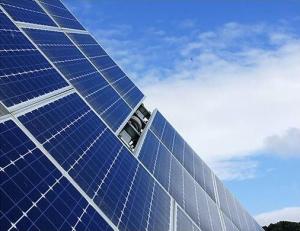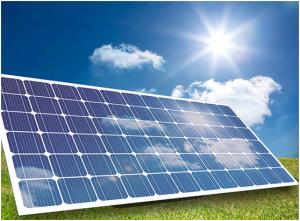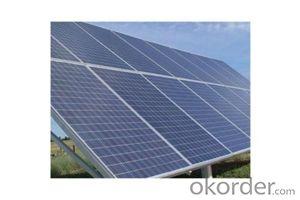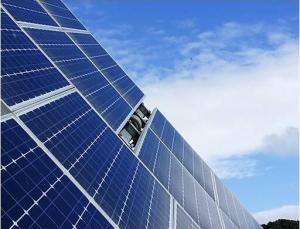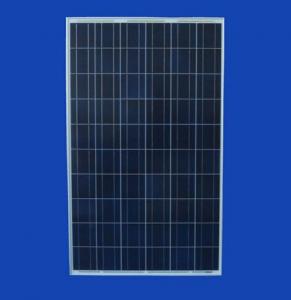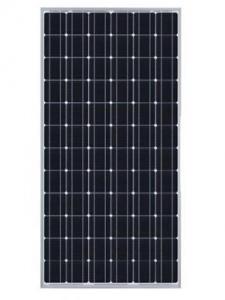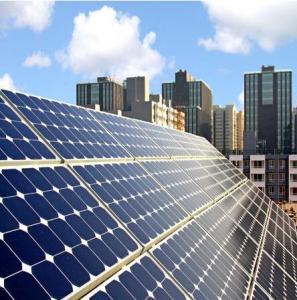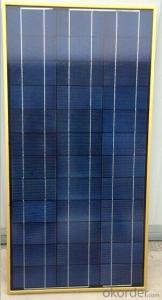Solar Panels El Cajon - Polycrystalline Silicon Solar Modules 60cell-245w
- Loading Port:
- China Main Port
- Payment Terms:
- TT or LC
- Min Order Qty:
- 1000 watt
- Supply Capability:
- 10000000 watt/month
OKorder Service Pledge
OKorder Financial Service
You Might Also Like
1. Structure of Polycrystalline Silicon Solar Modules 60Cell-245W Description
Solar panel refers either to a photovoltaics (PV) module, a solar hot water panel, or to a set of solar photovoltaics modules electrically
connected and mounted on a supporting structure. A PV module is a packaged, connected assembly of solar cells. Solar panels can be
used as a component of a larger photovoltaic system to generate and supply electricity in commercial and residential applications. Each
module is rated by its DC output power under standard test conditions, and typically ranges from 100 to 320 watts. The efficiency of a
module determines the area of a module given the same rated output – an 8% efficient 230 watt module will have twice the area of a 16%
efficient 230 watt module. There are a few solar panels available that are exceeding 19% efficiency. A single solar module can produce only
a limited amount of power; most installations contain multiple modules. A photovoltaic system typically includes a panel or an array of solar
modules, an inverter, and sometimes a battery and/or solar tracker and interconnection wiring.
2. Main Features of the Polycrystalline Silicon Solar Modules 60Cell-245W
• WARRANTIES
- 10-year limited product warranty1.
- Withstand windü loads of up to 2.4kPa and snow loads of up to 5.4kPa, confirming mechanical stability.
Successfully endureü ammonia and salt-mist exposure at the highest severity level, ensuring their performance in adverse conditions.
- High efficiency, multicrystalline silicon solar cells with high transmission and textured glass deliver a module effi ciency of up to 16.0%,
minimizing installation costs and maximizing the kWh output of your system per unit area.
- Tight positive power tolerance of 0W to +5W ensures you receive modules at or above nameplate power and contributes to minimizing
module mismatch losses leading to improved system yield.
- Top ranking in the “TÜV Rheinland Energy Yield Test” and the “PHOTON Test” demonstrates high performance and annual energy production.
3. Polycrystalline Silicon Solar Modules 60Cell-245W Images
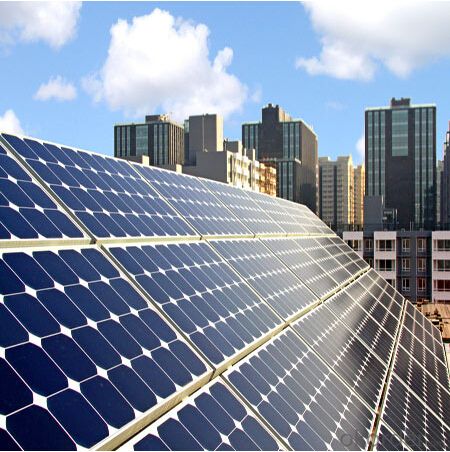
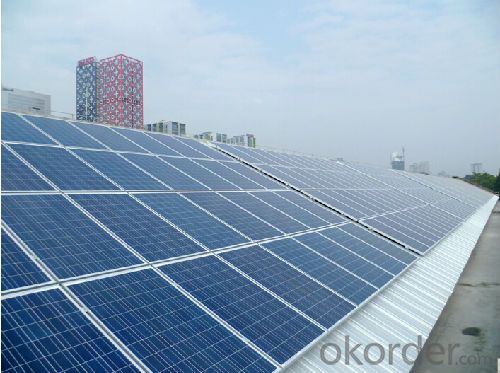
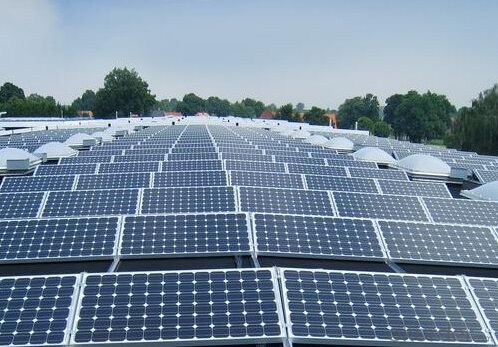
4. Polycrystalline Silicon Solar Modules 60Cell-245W Specification
窗体顶端 Electrical parameters at Standard Test Conditions (STC)窗体底端 | |||
Power output | P max | W | 245 |
Power output tolerances | ΔP max | W | 0 / + 5 |
Module effi ciency | η m | % | 15.1 |
Voltage at Pmax | V mpp | V | 29.6 |
Current at Pmax | I mpp | A | 8.28 |
Open-circuit voltage | V oc | V | 37.5 |
Short-circuit current | I sc | A | 8.83 窗体底端 |
5. FAQ of Polycrystalline Silicon Solar Modules 60Cell-245W
Q1:Can we visit your factory?
A1:Sure,welcome at any time,seeing is believing.
Q2:Which payment terms can you accept?
A2:T/T,L/C,Moneygram,Paypal are available for us.
- Q: Can solar panels be used for powering a marina or boating facility?
- Yes, solar panels can be used to power a marina or boating facility. Solar panels are a sustainable and efficient source of electricity that can provide clean energy to run various equipment, lighting, and charging stations at the marina or boating facility. Additionally, solar power can help reduce dependency on fossil fuels and lower operating costs in the long run.
- Q: hi,i have 4 solar panels. I can get 9V 400mA when i wired them parallel. The question is: how can i make a regulator circuit to store power into batteries.
- wire them in series parallel to get 8 volts at 200 mA, and that should charge a 2 volt battery. You may want to put in a series diode to prevent the battery from discharging into the panel when the sun is out. At 200 mA, depending on the battery size, you may not need much control, as that low a current will not overcharge a large battery, like a small auto battery. In fact it will take a very long time to charge it. edit: But do i need to add a regulator? If by that you mean a voltage regulator, no, as a solar panel has a high output resistance, and that will limit the current into the battery. If you mean a charge controller, if the battery is small, you may need a charge contoller to avoid overcharging the battery. But that is not a voltage regulator. .
- Q: I was hearing that we need silver as a medal for the creation of solar panels, is this true? How much silver would be needed to make one solar panel? (if this is true)
- Some research has shown that small amounts of silver can improve the efficiency of solar panels. But this appears to be in the research stage and applies to the the thin film solar cells. Some solar panels makes use silver as the wiring in kind of a screen printing process, but you don't need to use silver, you can use copper or aluminum using different techniques instead. Generally the metal used is in small amounts and not a majority of the cost of the solar panel.
- Q: Can solar panels be used to power a greenhouse?
- Yes, solar panels can be used to power a greenhouse. Solar panels convert sunlight into electricity, which can then be used to power various electrical systems in a greenhouse, such as lighting, ventilation, heating, and irrigation. This renewable energy source offers an environmentally friendly and cost-effective solution for greenhouse operations.
- Q: How long do solar panels last?
- Solar panels typically have a lifespan of around 25 to 30 years, although some can last even longer with proper maintenance.
- Q: Can solar panels be installed in a shaded area?
- Solar panels can still be installed in a shaded area, but their efficiency and electricity production will be significantly reduced.
- Q: Hi, I bought 50 6X6 inch solar cells, I also bought a 40 amp diode, I still need to buy a battery, and inverter and a voltage controller, could you tell answer me the following questions:) I would like t build a small panel at first, (may be 0 X 0 inch), with that I would like (or at least to try) to power my laptop for the hole day, so I wont receive a very high amperage, yet, all the inverters I saw at e-bay are rated over 400 amp, if I buy a 400 amp inverter, can I use it with such a small amperage?2) what about buying a small car inverter, will it work?3) suggestion about the battery and the voltage controller will be kindly appreciated.Thanks
- I have an inverter that I use in my vehicle. It is rated for 400 amps this is it's maximum capacity. I can use it for less. It converts 2V DC to 20V AC. So Thais is all I need and may be your cheapest option. If your panels are producing a lot of amperage you may need a regulator to stop charging when your battery is fully charged.
- Q: How efficient are solar panels when it comes to turning light into energy? If it's not 00%, why? Can it be improved? Also, how do solar panels work, exactly.
- Solar panels are 5-30% efficient in turning light into energy. I'm not sure why it isn't 00%, but methods are constantly improving, and the panels are getting more efficient with time and research. Solar panels work with photovoltaic (PV) cells, which are made up of two very thin layers of semiconductor with a middle junction layer. The kinetic energy in light photons create a current that flows into whatever electrical cord it is attached to.
- Q: Can solar panels be used in off-grid systems?
- Yes, solar panels can definitely be used in off-grid systems. In fact, they are a popular and reliable choice for generating electricity in remote locations where access to the traditional power grid is limited or non-existent. Off-grid solar systems store excess energy in batteries, ensuring a continuous power supply even during periods of low sunlight.
- Q: im doin a science experiment and i have a battery that is 3.6 volts , does it matter wut voltage the solar panel that im connecting it to is . Does it need to match , be less or does voltage have no effect . If so wut does matter when choosing the type of solar panel to power a bettery?
- You really need a little more infomation about your battery. It should have a recommended range of charging current. You should not exceed that range. Your solar cells must be a higher voltage than the battery, but you should not connect the cells directly to the battery. First, you need a diode in the line to keep the battery from draining into the solar cells when there is no light. Second, you need a resistor to limit the charging current. You have a 3.6v battery. Let's say the charging current is 0.A. Use a 5v solar cell and silicon diode. The diode will drop the cell voltage to 4.3v. The voltage across the resistor will be .7v for .A current, you need a 7-ohm resistor.
Send your message to us
Solar Panels El Cajon - Polycrystalline Silicon Solar Modules 60cell-245w
- Loading Port:
- China Main Port
- Payment Terms:
- TT or LC
- Min Order Qty:
- 1000 watt
- Supply Capability:
- 10000000 watt/month
OKorder Service Pledge
OKorder Financial Service
Similar products
Hot products
Hot Searches
Related keywords
